Welcome to our last tangle for the month of November 2020.
The sweet Temari is another easy tangle from Japanese CZT Hiromi Fukuoka and it’s her third on the site.
Hiromi explains her inspiration for Temari,
I saw Japanese crafts and came up with an idea.
Temari is one of the oldest playground equipment in Japan. The pattern of the hand ball is very nice, reminiscent of a Zentangle.
The “TEMARI” pattern looks like a flower or butterfly.
I think both children and adults can draw easily.
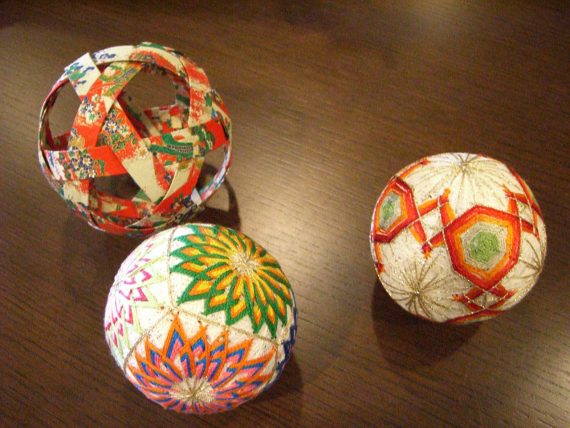
Three Temari balls with different decorations – By Conveyor belt sushi – originally posted to Flickr as Japanese folk art; Temari, CC BY 2.0
I was familiar with the term temari but didn’t really know anything about it. It’s a pretty fascinating rabbit hole! This Google search produces many, many beautiful examples of temari balls.
Not only is this an ancient craft but it has modern and timely meaning too, as Wikipedia explains:
Temari balls are a folk art form and Japanese craft, originating in China and introduced to Japan around the 7th century A.D.
“Temari” means “hand ball” in Japanese. Balls made from embroidery may be used in handball games and other such similar games (like, i.e., haki sack). An accessory similar in appearance (and constructed with similar techniques and materials), but with the addition of a hand-strap (made with either satin cord or ribbon) and a tassel, can serve as an accessory for a kimono; a kimono bag.
Historically, temari were constructed from the remnants of old kimono. Pieces of silk fabric would be wadded up to form a ball, and then the wad would be wrapped with strips of fabric.
As time passed, traditional temari became an art, with the functional stitching becoming more decorative and detailed, until the balls displayed intricate embroidery. With the introduction of rubber to Japan, the balls went from toys to art objects, although mothers still make them for their children. Temari became an art and craft of the Japanese upper class and aristocracy, and noble women competed in creating increasingly beautiful and intricate objects, some even altered so-as to double as handbags (like a kinchaku or a kimono bag).
Temari are highly valued and cherished gifts, symbolizing deep friendship and loyalty. Also, the brilliant colors and threads used are symbolic of wishing the recipient a brilliant and happy life. Traditionally, becoming a craftsman in Japan was a tedious process. Becoming a temari artist in Japan today requires specific training, and one must be tested on one’s skills and technique before being acknowledged as a crafter of temari.
Traditionally, temari were often given to children from their parents on New Year’s Day. Inside the tightly wrapped layers of each ball, the mother would have placed a small piece of paper with a goodwill wish for her child. The child would never be told what wish their mother had made while making the ball.
You can find some excellent how-to books on Amazon. From ancient folk art to modern-day tangle …
Hiromi illustrates the step-by-step instructions for drawing Temari below where she includes a simple variation and a delicate Zentangle® tile featuring Temari with the Zentangle-originals Rixty, Icanthis, Printemps and Pokeleaf.
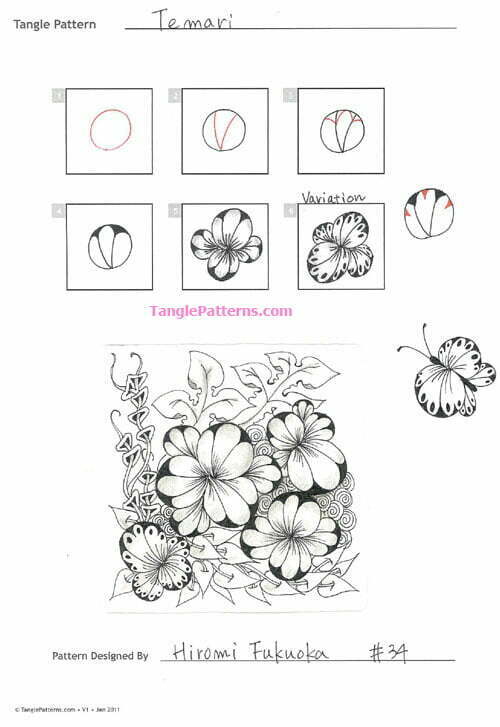
Image copyright the artist and used with permission, ALL RIGHTS RESERVED. These images are for your personal offline reference only. Please feel free to refer to the images to recreate this tangle in your personal Zentangles and ZIAs. However the artist and TanglePatterns.com reserve all rights to the images and they must not be publicly pinned, altered, reproduced or republished. Thank you for respecting these rights. Click the image for an article explaining what copyright means in plain English. “Always let your conscience be your guide.” ~ Jiminy Cricket
As you enjoy any of the tangles on the site, please leave a comment of thanks and encouragement to show the artists you appreciate them for sharing their creativity to inspire yours. Your thanks helps motivate them to continue to share! And please share a link to your favorite tangles on social media. Thanks!
Check out the tag hiromif for more of Hiromi’s tangles on TanglePatterns.com.
If you’re interested in learning the craft of making temari balls there are many instruction books available. Check your local library for these titles:
Related Links
- Looking for tangles by Artist or Type? For details visit the ABOUT > HOW TO FIND TANGLES BY ARTIST OR TYPE page on the top menu bar of any page on the site.
- What is a Zentangle? — if you are new to the Zentangle Method, start here for the fundamentals.
- Zentangle terminology — a glossary of terms used in this art form.
- How to use the site — an excellent free video tutorial showing how to use the site as well as pointing out lots of useful features you might have missed.
- Linda's List of Zentangle-Original Patterns — here is the complete list of original tangles (aka "official tangles") created and introduced by founders Rick Roberts and Maria Thomas, including those not published online. If you are new to the Zentangle Method I highly recommend learning a few of the published Zentangle classics first.
- "A Zentangle has no up or down and is not a picture of something, so you have no worries about whether you can draw a hand, or a duck. You always succeed in creating a Zentangle." Patterns that are drawings of a recognizable naturalistic or actual object, figure, or scene, are not tangles. A pattern is not always a tangle — here's what makes a tangle. TIP: tangles never start with pencil planning.
- Un motif n’est pas toujours un tangle — Qu’est-ce qu’un tangle ?
- Un diseño no es siempre un tangle — ¿Qué es un tangle?
- How to submit your pattern deconstruction to TanglePatterns
- For lots of great FREE tutorials on TanglePatterns, click on the TUTORIALS link in the pink alphabetic menu bar below the tangle images at the top of any page.
- Strings! Have we got STRINGS! Click on the STRINGS link in the pink alphabetic menu bar below the tangle images at the top of any page for 250 different (free) Zentangle-starters. More than enough for any lifetime!
- Never miss a tangle! FREE eMAIL NEWSLETTER - visit the Here's how to SUBSCRIBE button (top of left sidebar on any page) and sign up to get notices delivered free to your inbox.
- If you have questions about the TanglePatterns.com TANGLE GUIDE, visit the BOOK REVIEWS tab on the top menu bar of any page on the site for COMPLETE details!
|
.oOo. |
|
Enhance your Zentangle experience while supporting TanglePatterns: |
|
BRAND NEW! TanglePatterns.com TANGLE GUIDE, 2026 Edition |
|
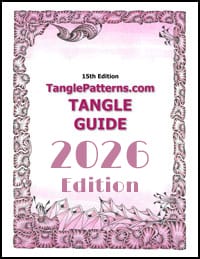 |
The 15th Edition of the TanglePatterns.com TANGLE GUIDE is an instant-download 123-page interactive digital eBook/PDF containing over 2,300 tangles on the site from May 2010 through December 31, 2025. It's a great resource and a must-have digital tool for using the site. Visit the STORE > E-BOOKS page and help keep TanglePatterns.com going by getting your copy now! |
|
"Linda, Thank you! I was relying on too few and getting stuck after 3 years of daily working with Zentangle. This has inspired me to ‘begin again’ with renewed excitement." ~ Barbara R. |
|
| See the BOOK REVIEWS page for more details on its features and view a sample page. Note: this is a digital product to download immediately when ordering, nothing will be physically mailed to you. | |
| If you're new to Zentangle® and tangling, my TanglePatterns.com BEGINNER'S GUIDE TO ZENTANGLE is just what you need to get started. Also available en Français and en Español. | |
|
|
|
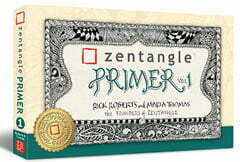 |
This is the only Zentangle book you'll ever need: the fabulous Zentangle PRIMER Vol 1. It's your CZT-in-a-book by the founders of Zentangle®. For more about the content and to read the rave reviews, visit the BOOK REVIEWS tab. |
| Available in KINDLE format for $9.99. Spanish Edition here. Japanese Edition here. | |
| "Absolutely the best Zentangle Book yet! As an accomplished artist I used to think I did not need instruction on this art form. How wrong I was! My tangling improved by leaps and bounds after reading this book. If you think you have Zentangle down then you need this book more than ever!" ~ Kris H | |
|
|
|
|
.oOo. |
|

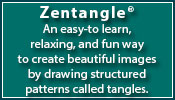


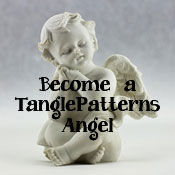

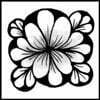
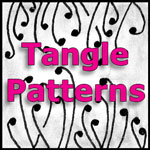
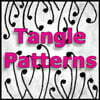
Thanks Hiromi for a beautiful tangle and a great memory of Japan for me. I still have a temari ball hanging here in my craft room. I got it over 40 years ago when we lived in Japan and I enjoy seeing it everyday.
You lived in Japan. It’s nice to have a Temari at that time.
Hirohito. I love this pattern! Thank you for sharing your talent with us.
Nancy
Thank you.
Beautiful! I love the story behind the design. I learn something every day!
Thank you for your nice comment.
Great story behind your pattern. Thanks for sharing your creative design with us
Thank you for your nice comment.
This is a beautiful pattern. Thank you!